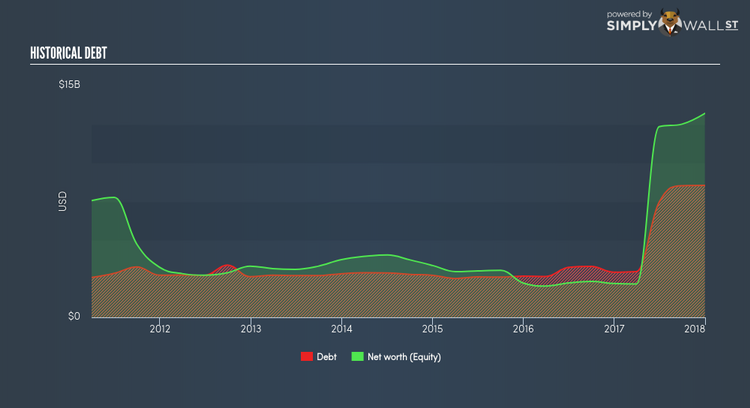How Financially Strong Is DXC Technology Company (NYSE:DXC)?

Investors seeking to preserve capital in a volatile environment might consider large-cap stocks such as DXC Technology Company (NYSE:DXC) a safer option. Big corporations are much sought after by risk-averse investors who find diversified revenue streams and strong capital returns attractive. However, the key to their continued success lies in its financial health. I will provide an overview of DXC Technology’s financial liquidity and leverage to give you an idea of DXC Technology’s position to take advantage of potential acquisitions or comfortably endure future downturns. Note that this commentary is very high-level and solely focused on financial health, so I suggest you dig deeper yourself into DXC here. See our latest analysis for DXC Technology
How does DXC’s operating cash flow stack up against its debt?
Over the past year, DXC has ramped up its debt from US$2.64B to US$2.96B , which is made up of current and long term debt. With this rise in debt, DXC’s cash and short-term investments stands at US$1.26B , ready to deploy into the business. Additionally, DXC has generated cash from operations of US$978.00M over the same time period, leading to an operating cash to total debt ratio of 33.00%, signalling that DXC’s current level of operating cash is high enough to cover debt. This ratio can also be a sign of operational efficiency as an alternative to return on assets. In DXC’s case, it is able to generate 0.33x cash from its debt capital.
Does DXC’s liquid assets cover its short-term commitments?
Looking at DXC’s most recent US$2.95B liabilities, it seems that the business has been able to meet these obligations given the level of current assets of US$3.25B, with a current ratio of 1.1x. Usually, for IT companies, this is a suitable ratio since there’s sufficient cash cushion without leaving too much capital idle or in low-earning investments.
Does DXC face the risk of succumbing to its debt-load?
DXC is a relatively highly levered company with a debt-to-equity of 64.69%. This isn’t uncommon for large companies because interest payments on debt are tax deductible, meaning debt can be a cheaper source of capital than equity. Accordingly, large companies often have an advantage over small-caps through lower cost of capital due to cheaper financing. We can test if DXC’s debt levels are sustainable by measuring interest payments against earnings of a company. Net interest should be covered by earnings before interest and tax (EBIT) by at least three times to be safe. In DXC’s case, the ratio of 9.29x suggests that interest is well-covered. Large-cap investments like DXC are often believed to be a safe investment due to their ability to pump out ample earnings multiple times its interest payments.
Next Steps:
Although DXC’s debt level is towards the higher end of the spectrum, its cash flow coverage seems adequate to meet obligations which means its debt is being efficiently utilised. This may mean this is an optimal capital structure for the business, given that it is also meeting its short-term commitment. Keep in mind I haven’t considered other factors such as how DXC has been performing in the past. I suggest you continue to research DXC Technology to get a more holistic view of the large-cap by looking at:
Future Outlook: What are well-informed industry analysts predicting for DXC’s future growth? Take a look at our free research report of analyst consensus for DXC’s outlook.
Valuation: What is DXC worth today? Is the stock undervalued, even when its growth outlook is factored into its intrinsic value? The intrinsic value infographic in our free research report helps visualize whether DXC is currently mispriced by the market.
Other High-Performing Stocks: Are there other stocks that provide better prospects with proven track records? Explore our free list of these great stocks here.
To help readers see pass the short term volatility of the financial market, we aim to bring you a long-term focused research analysis purely driven by fundamental data. Note that our analysis does not factor in the latest price sensitive company announcements.
The author is an independent contributor and at the time of publication had no position in the stocks mentioned.

